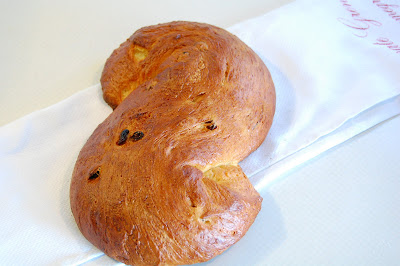Sustaining really is the word for it. Wasn't Jean Valjean originally thrown in prison for stealing a loaf of bread? Bread is so ancient, every culture has a plethora of bread recipes integral to their customs, rituals and identity. Some cultures and religions use bread as they do language, laden with symbolism and representing histories or intensely personal experiences - the Eucharist in Christianity, the matzoh in Judaism. Others use it to simply feast or commemorate joy - in India puri's are eaten at weddings and festivals in heaps upon heaps.
I've been making things like banana bread for a while now, but in all honesty never really gave it a thought on a molecular level or anything along those lines. This is changing. Just a few hours ago I finally bought a copy of 'The Bread Bible' - and it's a complete revelation, gadzooks! Suddenly things make a bit more sense, and I'm amazed at how complicated and intricate the process is - yeast is apparently a tempestuous creature, the temperature needs to be just so, the salt can't be folded in until later or you actually Kill off the yeast (very counter productive), the kneading forms the gluten, the gluten forms the infrastructure, the carbon dioxide puffs the whole thing up and the alcohol gives it flavour (carbon dioxide and alcohol being given off by the yeast as it greedily feasts its way through the sugars in the flour), the combination of all of this coupled with the temperature and altitude can either blow up your dough explosively or make it completely deflate unto itself.
Who knew?
I'm only on chapter 2 of this book and am convinced that
a) I love it.
b) When I grow up I want to be Rose Levy Berenbaum.
I haven't broached her actual bread recipes yet, so here's a Rosemary Raisin Bread recipe from farmgirlfare that I had tried out a few weeks ago.
Rosemary Raisin Bread
3 and 3/4 cups bread flour
2 tsp instant yeast
1/2 cup warm milk
1 tablespoon rosemary (fresh)
1 and 1/2 cups raisins
5 tablespoons olive oil
4 beaten eggs
1 and 1/2 tsp salt
Mix the flour and yeast together well, and then add the milk, rosemary, raisins, olive oil, and eggs. Mix thoroughly forming a fairly sticky dough - add flour (an extra tablespoon at a time) if at the end the dough is too wet to work with. Turn onto a floured work surface and knead for 5 minutes. Cover and let it rests for 20 minutes. Knead in the salt - be militant with this bit as my bread ended up having a solid lump of salt smack in the middle of one of the slices (sorry mum). Continue to knead until the dough is springy and elastic, around 10 minutes. Put the dough in an oiled bowl and let it rise in a warm place for about 2 hours. Muster up any aggression in your being, and punch the dough down. It's tremendously therapeutic.


The original recipe called for 4 tablespoons of olive oil, but my loaves were a bit too dry so I'd add 5 next time. It's not exactly ideal sandwich bread as it's hopelessly flat (mea culpa though, I left it for entirely too long sitting around the kitchen), but it turned out rather lovely smeared in butter alongside an omelette, and a glass of tea.

























